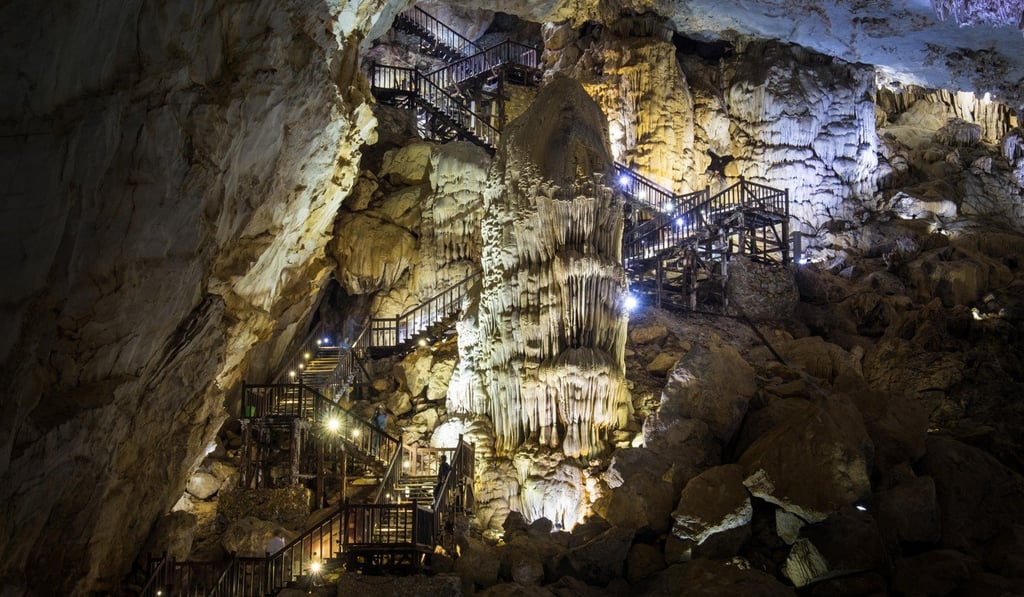Vietnam’s Thien Duong: longest dry cave in Asia and its stunning beauty - no wonder it’s name means paradise
- Thien Duong in the Phong Nha-Ke Bang National Park was formed 350 to 400 million years ago. It was discovered in 2005, and opened to visitors in 2010
- Only 15 visitors per day are allowed to explore up to 7km of the 31.5km-long cave, which is filled with stalactites and stalagmites of all sizes

We are making our way through Paradise Cave in central Vietnam, the longest dry cave in Asia, when our guide tells us to turn off our head torches.
“We are going to try walking in total darkness,” he says, as if exploring a cave formed 350 to 400 million years ago isn’t exciting enough already. I exchange a glance with my five tour mates, a family from England. The cave is relatively big and the walls are at a safe distance from us, but the thought of walking without lights is still daunting.
Wandering in the dark, with nothing but the sound of our footsteps echoing to accompany us, I take tentative baby steps and lag far behind until we finally turn our lights back on.
Paradise Cave one of the most popular caves in Phong Nha-Ke Bang National Park. It was discovered by a local who was hunting in the region in 2005, and its doors were opened to visitors in 2010.

The British Cave Research Association, which explored the cave, named it Thien Duong – Paradise – because of its beauty, and its walkways show off rotund and fluidly shaped stalactites and stalagmites of various sizes.